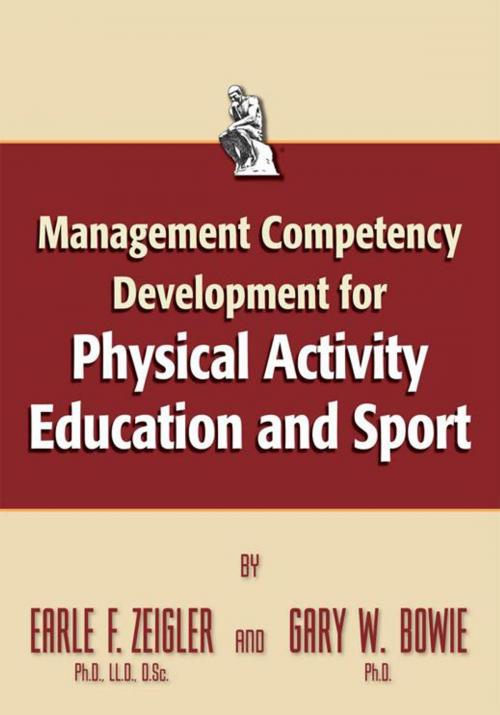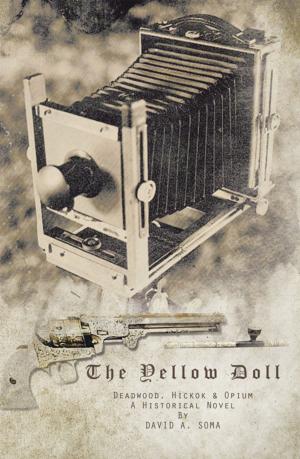Management Competency for Physical Activity Education and Sport
Nonfiction, Sports, Individual Sports, Training| Author: | Earle F. Zeigler, Gary W. Bowie | ISBN: | 9781466981010 |
| Publisher: | Trafford Publishing | Publication: | August 24, 2007 |
| Imprint: | Trafford Publishing | Language: | English |
| Author: | Earle F. Zeigler, Gary W. Bowie |
| ISBN: | 9781466981010 |
| Publisher: | Trafford Publishing |
| Publication: | August 24, 2007 |
| Imprint: | Trafford Publishing |
| Language: | English |
The introduction of this combined text and laboratory workbook - with its "tear-out" sheets on which to complete specific "experiences" - is a "first" in the field! It can be employed either by itself or in connection with a standard text that has limited or no practical exercises included. If desirable, also, the instructor could amplify what is offered here by the addition of other "laboratory experiences" developed from the listing in Part I of well over 100 desirable experiences under the five broad categories included. A comprehensive analysis of management science literature indicated the need to introduce a step-by-step plan for management skill or competency attainment.
In doing so, the authors built on Katz's (Harvard) tripartite categorization of skills and expanded it to five subdivisions so as to cover also the personal attributes needed by the prospective manager, as well as those "conjoined" skills gained through a "combinatorial process" that the individual is required to employ on the job. What Katz calls human skills, we now call interpersonal skills so as to distinguish this category from personal skills (No.1 below). These subdivisions or categories are, therefore, as follows:
- Personal skills (or developing one's own individual competencies prior to concentrating of the managerial task)
- Interpersonal skills (or acquiring the skills needed to influence people positively to work toward accomplishment of organizational objectives and goals)
- Conceptual skills (or learning to formulate ideas and plans while on the job as a manager)
- Technical skills (or acquiring the various skills and techniques needed to cope with the various organizational details and problems that arise)
- Conjoined skills (or developing the various managerial skills in some combination or proportion to achieve both immediate and long-range objectives and goals)
Granting that Katz's categories of human (interpersonal, as we call it), conceptual, and technical managerial skills, along with our additional subdivisions of so-called personal and conjoined skills, are not mutually exclusive, this plan enables the teacher and the students to move selectively from theory to practice within each of the five categories described.
The method for working toward the achievement of the specific competencies or skills is (1) through the provision of statements describing the objectives of the modules used to develop the competencies, (2) to offer "knowledge statements introducing the trainee to the theoretic bases of the competencies and their roles and functions in the management process, and (3) by recommending selected laboratory exercises for achieving a degree of success (at least) based on involvement in a variety of problem-solving experiences. After the student comprehends the problem to be met or solved, a questioning process determines (1) what needs to be known, (2) where this information may be obtained, (3) how to organize the actual learning experience, (4) what the probable result will be, and (5) how to evaluate the level of competency attainment (where such is possible).
The teaching and learning process employed by the instructor is designed, therefore, to include a variety of laboratory experiences. The tear-out sheets for each laboratory experience are to be completed and handed in as indicated by the course instructor. In addition to standard lecture and discussion techniques that we assume will be included by the instructor, other learning devices available can include use of the case method, role-playing, independent study, interaction with a personal computer, elementary theory formulation, response to questionnaires and self-testing devices, individual projects, small discussion groups, etc. When the instructor wishes, and there is class time available, he or she can introduce action or applied research, based independent investigation (e.g., survey, game theory), debates, internship experiences, panels, forums, and so forth. Basically, a fivefold learning process is recommended. This process employs three steps: (1) understanding of the objective of the learning experience module, (2) reading and comprehension of a "knowledge statement" or "lecturette" about the particular skill involved, and (3) skill learning through analysis and practice. Thus, the instructor can (1) assess initial student status, (2) introduce selected experiences to strengthen areas of possible weakness, and subsequently (3) evaluate competency attainment.
The introduction of this combined text and laboratory workbook - with its "tear-out" sheets on which to complete specific "experiences" - is a "first" in the field! It can be employed either by itself or in connection with a standard text that has limited or no practical exercises included. If desirable, also, the instructor could amplify what is offered here by the addition of other "laboratory experiences" developed from the listing in Part I of well over 100 desirable experiences under the five broad categories included. A comprehensive analysis of management science literature indicated the need to introduce a step-by-step plan for management skill or competency attainment.
In doing so, the authors built on Katz's (Harvard) tripartite categorization of skills and expanded it to five subdivisions so as to cover also the personal attributes needed by the prospective manager, as well as those "conjoined" skills gained through a "combinatorial process" that the individual is required to employ on the job. What Katz calls human skills, we now call interpersonal skills so as to distinguish this category from personal skills (No.1 below). These subdivisions or categories are, therefore, as follows:
- Personal skills (or developing one's own individual competencies prior to concentrating of the managerial task)
- Interpersonal skills (or acquiring the skills needed to influence people positively to work toward accomplishment of organizational objectives and goals)
- Conceptual skills (or learning to formulate ideas and plans while on the job as a manager)
- Technical skills (or acquiring the various skills and techniques needed to cope with the various organizational details and problems that arise)
- Conjoined skills (or developing the various managerial skills in some combination or proportion to achieve both immediate and long-range objectives and goals)
Granting that Katz's categories of human (interpersonal, as we call it), conceptual, and technical managerial skills, along with our additional subdivisions of so-called personal and conjoined skills, are not mutually exclusive, this plan enables the teacher and the students to move selectively from theory to practice within each of the five categories described.
The method for working toward the achievement of the specific competencies or skills is (1) through the provision of statements describing the objectives of the modules used to develop the competencies, (2) to offer "knowledge statements introducing the trainee to the theoretic bases of the competencies and their roles and functions in the management process, and (3) by recommending selected laboratory exercises for achieving a degree of success (at least) based on involvement in a variety of problem-solving experiences. After the student comprehends the problem to be met or solved, a questioning process determines (1) what needs to be known, (2) where this information may be obtained, (3) how to organize the actual learning experience, (4) what the probable result will be, and (5) how to evaluate the level of competency attainment (where such is possible).
The teaching and learning process employed by the instructor is designed, therefore, to include a variety of laboratory experiences. The tear-out sheets for each laboratory experience are to be completed and handed in as indicated by the course instructor. In addition to standard lecture and discussion techniques that we assume will be included by the instructor, other learning devices available can include use of the case method, role-playing, independent study, interaction with a personal computer, elementary theory formulation, response to questionnaires and self-testing devices, individual projects, small discussion groups, etc. When the instructor wishes, and there is class time available, he or she can introduce action or applied research, based independent investigation (e.g., survey, game theory), debates, internship experiences, panels, forums, and so forth. Basically, a fivefold learning process is recommended. This process employs three steps: (1) understanding of the objective of the learning experience module, (2) reading and comprehension of a "knowledge statement" or "lecturette" about the particular skill involved, and (3) skill learning through analysis and practice. Thus, the instructor can (1) assess initial student status, (2) introduce selected experiences to strengthen areas of possible weakness, and subsequently (3) evaluate competency attainment.















